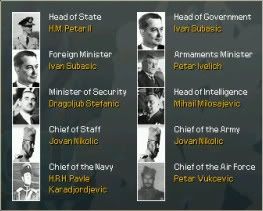Presidential Timeline
31.) Herbert Hoover; Republican-California (1929-1933)
32.) Franklin D. Roosevelt; Democratic-New York (1933-1941)
33.) Wendell Willkie; Republican-Indiana (1941-1944)
34.) Arthur H. Vandenberg; Republican-Michigan (1944-1945)
35.) Thomas E. Dewey; Republican-New York (1945-1953)
36.) Adlai Stevenson II; Democratic-Illinois (1953-1954)
37.) John Sparkman; Democratic-Alabama (1954-1961)
38.) Henry M. Jackson; Democratic-Washington (1961- )
----------------------------------------------------------------------------------------------------------------------
Prologue

For the United States, four major wars defined the 20th Century: World War One, World War Two, the Vietnam War, and the Iraqi Conflicts of the 1990s. Of these four, the Vietnam War was the longest in regards to American involvement. Several Presidents sought to prevent Communism from taking over Vietnam. The first to do so was Republican Thomas E. Dewey of New York (1945-1953).
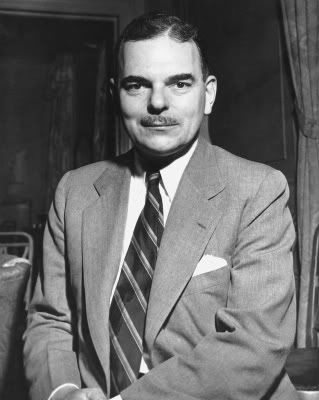
The road to the Vietnam War begins in the aftermath of World War Two (1939-1947). On February 2nd, 1947, the Imperial Japanese Government formally surrendered aboard the Iowa-class battleship USS Missouri in Hong Kong. With the stroke of a pen, the global war which had begun seven-and-a-half-years earlier in the Polish countryside was finally over.
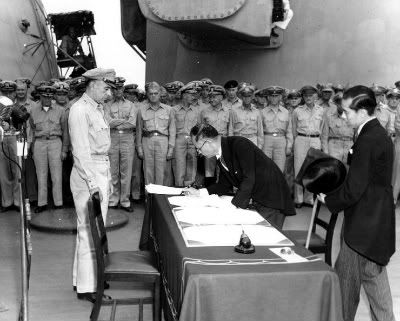
After the war, Dewey initially paid little attention to the French effort to move back into Southeast Asia (they had been booted out of the region by the Japanese in 1940). He had a very full plate at the time, and there was simply no room for the situation unfolding in Vietnam. With the Second World War over, America underwent a rocky transition back to peacetime. The Dewey Administration was determined to tackle postwar issues head on; however, they ran into a roadblock. Even though the President’s political party controlled both houses of Congress, those in charge on Capitol Hill (most notably Ohio Senator Robert Taft) were in a Conservative mood and were in no mood to rubberstamp comprehensive and sweeping proposals. As a result, postwar problems that could have been addressed were allowed to get worse…such as the biggest housing shortage in American history. To quickly provide affordable homes for returning veterans and their baby-booming families, an ingenious Navy veteran named William Levitt transformed fields into mass-produced planned communities known as “suburbs”.

Starting in the spring of 1947, labor unions, no longer bound to wartime promises not to strike, demanded “catch-up” pay hikes. To ensure that their demands were met, strikes erupted across the United States. For instance, 15,000 New York City elevator operators walked off their jobs, 175,000 employees of General Motors walked out of plants in nineteen states, and 800,000 steel workers walked away from over 1,000 mills scattered across the country.
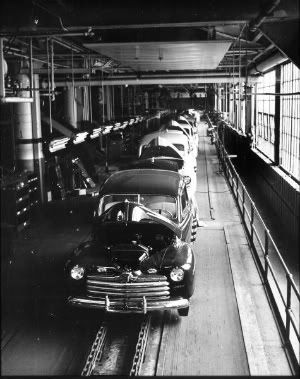
Meanwhile in Europe, the alliance between Democracy and Communism collapsed as both sides set about implementing their conflicting visions of the postwar world. British Prime Minister Winston Churchill (1940-1948) spoke of the developing Cold War between East and West at the University of Michigan in August 1947:
“From Petsamo in the Barents to Varna in the Black Sea, an iron curtain has descended across the Continent. Behind that line lie all the capitals of the ancient states of Eastern Europe. Helsinki, Warsaw, Bratislava, Budapest, Bucharest, and Sofia, all these famous cities and the populations around them lie in what I must call the Soviet sphere, and all are subject in one form or another, not only to Soviet influence but to a very high and, in many cases, increasing measure of control from Moscow.”
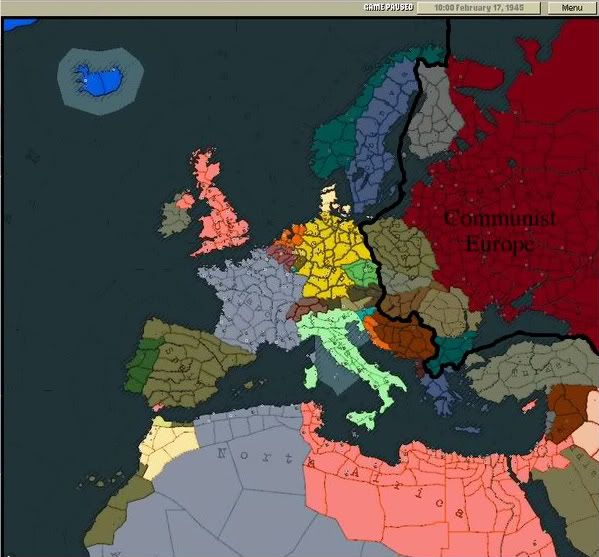
Over in Asia, the map of the continent was being dramatically redrawn. Japan, her days of Imperialism clearly over, was placed under American occupation – supervised by Douglas MacArthur, one of the key architects of Japan’s defeat – and was transformed into a Western-style Democracy. In the New Japan, Emperor Hirohito was nothing more than a ceremonial figurehead and the landlord power structure was dismantled in favor of allowing farmers to purchase their own land instead. The Korean Peninsula underwent a transformation from being a Japanese colony to being a Democracy with a strong focus on the President – who was indirectly elected by the National Assembly. Syngman Rhee, an anti-Communist strongman, was elected the first President of the Republic of Korea. The Iron Curtain was installed in China, dividing the land into two spheres. Chiang Kai-shek (who had been forced into exile when the Japanese conquered China in 1939) returned to power in Nationalist China and established a socially conservative government. The other sphere became Red China, a coalition of puppet states whose borders were drawn by Moscow.
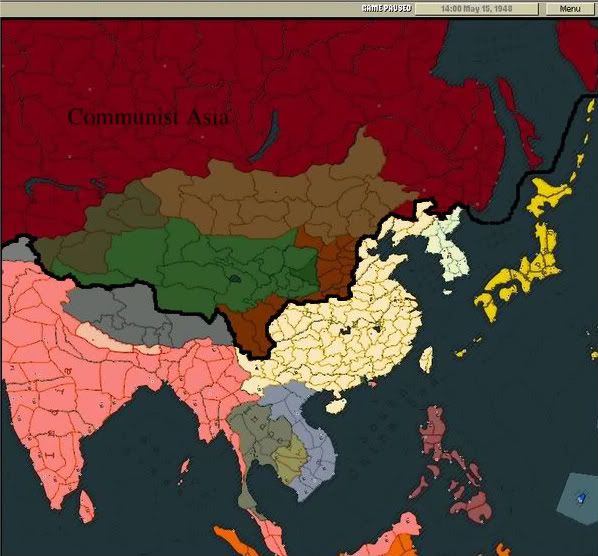
With all this and more going on, Dewey (who was also up for re-election as President in 1948) had no time to pay attention to Vietnam. That would all change during his second term.
--------------------------------------------------------------------------
Introduction
Welcome to The Presidents: The Vietnam War Edition. The sequel to The Presidents: Hoover to Dewey (1929-1953) Version 2.0, The Vietnam War picks up where the previous AAR left off. In this sequel, we will see America navigate her way through the 1950s and 1960s (and perhaps the 1970s). We will see America participate in an ideological duel with the Soviet Union, with places like Cuba and even Outer Space serving as battlefronts. Domestically, America will be openly challenged by the growing Civil Rights Movement and the rise of the youth culture. As these events unfold, the United States will be drawn into a war in a place called Vietnam.
This AAR will start off with nomonhan’s Cold War Tech Tree Extension Project (thanks for pointing it out, c0d5579), which greatly expands the tech tree for Armageddon. Once I get to fight the Vietnam War itself (which will be the mid-1960s), I will switch over to frvp’s The Vietnam War. In fact, I think this will be the first AAR using that mod. So not only does this AAR continue the Hoover to Dewey storyline, it is also unique in the sense that it is showcasing the Vietnam mod for the first time.
So off to Vietnam we go!
31.) Herbert Hoover; Republican-California (1929-1933)
32.) Franklin D. Roosevelt; Democratic-New York (1933-1941)
33.) Wendell Willkie; Republican-Indiana (1941-1944)
34.) Arthur H. Vandenberg; Republican-Michigan (1944-1945)
35.) Thomas E. Dewey; Republican-New York (1945-1953)
36.) Adlai Stevenson II; Democratic-Illinois (1953-1954)
37.) John Sparkman; Democratic-Alabama (1954-1961)
38.) Henry M. Jackson; Democratic-Washington (1961- )
----------------------------------------------------------------------------------------------------------------------
Prologue

For the United States, four major wars defined the 20th Century: World War One, World War Two, the Vietnam War, and the Iraqi Conflicts of the 1990s. Of these four, the Vietnam War was the longest in regards to American involvement. Several Presidents sought to prevent Communism from taking over Vietnam. The first to do so was Republican Thomas E. Dewey of New York (1945-1953).

The road to the Vietnam War begins in the aftermath of World War Two (1939-1947). On February 2nd, 1947, the Imperial Japanese Government formally surrendered aboard the Iowa-class battleship USS Missouri in Hong Kong. With the stroke of a pen, the global war which had begun seven-and-a-half-years earlier in the Polish countryside was finally over.

After the war, Dewey initially paid little attention to the French effort to move back into Southeast Asia (they had been booted out of the region by the Japanese in 1940). He had a very full plate at the time, and there was simply no room for the situation unfolding in Vietnam. With the Second World War over, America underwent a rocky transition back to peacetime. The Dewey Administration was determined to tackle postwar issues head on; however, they ran into a roadblock. Even though the President’s political party controlled both houses of Congress, those in charge on Capitol Hill (most notably Ohio Senator Robert Taft) were in a Conservative mood and were in no mood to rubberstamp comprehensive and sweeping proposals. As a result, postwar problems that could have been addressed were allowed to get worse…such as the biggest housing shortage in American history. To quickly provide affordable homes for returning veterans and their baby-booming families, an ingenious Navy veteran named William Levitt transformed fields into mass-produced planned communities known as “suburbs”.

Starting in the spring of 1947, labor unions, no longer bound to wartime promises not to strike, demanded “catch-up” pay hikes. To ensure that their demands were met, strikes erupted across the United States. For instance, 15,000 New York City elevator operators walked off their jobs, 175,000 employees of General Motors walked out of plants in nineteen states, and 800,000 steel workers walked away from over 1,000 mills scattered across the country.

Meanwhile in Europe, the alliance between Democracy and Communism collapsed as both sides set about implementing their conflicting visions of the postwar world. British Prime Minister Winston Churchill (1940-1948) spoke of the developing Cold War between East and West at the University of Michigan in August 1947:
“From Petsamo in the Barents to Varna in the Black Sea, an iron curtain has descended across the Continent. Behind that line lie all the capitals of the ancient states of Eastern Europe. Helsinki, Warsaw, Bratislava, Budapest, Bucharest, and Sofia, all these famous cities and the populations around them lie in what I must call the Soviet sphere, and all are subject in one form or another, not only to Soviet influence but to a very high and, in many cases, increasing measure of control from Moscow.”

Over in Asia, the map of the continent was being dramatically redrawn. Japan, her days of Imperialism clearly over, was placed under American occupation – supervised by Douglas MacArthur, one of the key architects of Japan’s defeat – and was transformed into a Western-style Democracy. In the New Japan, Emperor Hirohito was nothing more than a ceremonial figurehead and the landlord power structure was dismantled in favor of allowing farmers to purchase their own land instead. The Korean Peninsula underwent a transformation from being a Japanese colony to being a Democracy with a strong focus on the President – who was indirectly elected by the National Assembly. Syngman Rhee, an anti-Communist strongman, was elected the first President of the Republic of Korea. The Iron Curtain was installed in China, dividing the land into two spheres. Chiang Kai-shek (who had been forced into exile when the Japanese conquered China in 1939) returned to power in Nationalist China and established a socially conservative government. The other sphere became Red China, a coalition of puppet states whose borders were drawn by Moscow.

With all this and more going on, Dewey (who was also up for re-election as President in 1948) had no time to pay attention to Vietnam. That would all change during his second term.
--------------------------------------------------------------------------
Introduction
Welcome to The Presidents: The Vietnam War Edition. The sequel to The Presidents: Hoover to Dewey (1929-1953) Version 2.0, The Vietnam War picks up where the previous AAR left off. In this sequel, we will see America navigate her way through the 1950s and 1960s (and perhaps the 1970s). We will see America participate in an ideological duel with the Soviet Union, with places like Cuba and even Outer Space serving as battlefronts. Domestically, America will be openly challenged by the growing Civil Rights Movement and the rise of the youth culture. As these events unfold, the United States will be drawn into a war in a place called Vietnam.
This AAR will start off with nomonhan’s Cold War Tech Tree Extension Project (thanks for pointing it out, c0d5579), which greatly expands the tech tree for Armageddon. Once I get to fight the Vietnam War itself (which will be the mid-1960s), I will switch over to frvp’s The Vietnam War. In fact, I think this will be the first AAR using that mod. So not only does this AAR continue the Hoover to Dewey storyline, it is also unique in the sense that it is showcasing the Vietnam mod for the first time.
So off to Vietnam we go!
Last edited:
- 1


